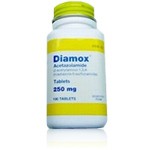High Altitude Sickness: Causes, Symptoms, and How to Treat It


High altitude sickness, also known as acute mountain sickness (AMS), is a condition that occurs when individuals ascend to high altitudes too quickly, causing the body to struggle with the reduced oxygen levels found at these elevations. This condition is particularly common in people who travel to mountainous regions for hiking, climbing, or skiing. While most people experience mild symptoms, altitude sickness can range from mild to severe and, if untreated, may progress to life-threatening conditions such as high-altitude pulmonary edema (HAPE) or high-altitude cerebral edema (HACE).
This article explores the causes of high-altitude sickness, its symptoms, the best ways to treat it, the importance of acclimatization, and how medications like Diamox can help prevent and treat the condition.
What Causes High Altitude Sickness?
High altitude sickness is caused by the lower oxygen levels found at higher elevations. As one ascends to higher altitudes, the air pressure decreases, and the amount of available oxygen also decreases. This makes it harder for the body to get the oxygen it needs to function properly. At sea level, the oxygen concentration is around 21%, but at high altitudes, this percentage drops, making it more challenging for the body to maintain normal oxygen levels.
When the body is exposed to these lower oxygen levels, it begins to compensate by increasing the rate of breathing and the heart rate to provide more oxygen to the blood. However, this compensation may not be enough if the ascent is too rapid. This imbalance can lead to symptoms such as dizziness, shortness of breath, headache, and nausea.
The severity of high-altitude sickness can vary depending on how high the individual ascends and how quickly they ascend. Rapid ascents that do not allow the body time to adjust increase the likelihood of developing symptoms. Other factors, such as dehydration, fatigue, and pre-existing medical conditions like asthma or heart disease, can also contribute to the risk of developing altitude sickness.
What is the Best Treatment for Altitude Sickness?
The best treatment for high-altitude sickness depends on the severity of the symptoms. For mild symptoms, the first step is to stop ascending and allow the body to acclimatize to the higher altitude. Taking it slow and avoiding rapid ascents is key to preventing the condition from worsening.
Rest and hydration are essential. The body loses fluids quickly at higher altitudes due to increased breathing and sweating, and dehydration can exacerbate the symptoms of altitude sickness. Drinking plenty of fluids, particularly water, can help the body cope better with the reduced oxygen levels.
For more severe symptoms, descending to a lower altitude is often the most effective treatment. This provides the body with more oxygen and allows it to recover. If the symptoms persist or worsen, medical treatment may be required, such as oxygen therapy or medications to reduce swelling in the brain or lungs.
The use of medications, such as Diamox (acetazolamide), can also help to treat altitude sickness. Diamox works by increasing the rate of breathing, thereby improving oxygen delivery to the body and speeding up the acclimatization process. It can help reduce the severity of symptoms such as headaches and nausea.
In extreme cases, when symptoms progress to HAPE or HACE, immediate medical attention is needed, and descent to a lower altitude is imperative. These conditions are life-threatening and require immediate intervention to prevent serious complications or death.
What is the Fastest Way to Adjust to High Altitude?
The fastest and most effective way to adjust to high altitude is through proper acclimatization. Acclimatization is the process of allowing the body to gradually adjust to the lower oxygen levels found at higher altitudes. This can be achieved by taking gradual steps during the ascent to give the body time to adapt.
The general rule for acclimatization is to ascend slowly and take breaks along the way. For every 1,000 meters (3,280 feet) gained in altitude, it is recommended to take a rest day to allow the body to adjust. This process of gradual ascent helps the body produce more red blood cells and improve its oxygen-carrying capacity, which can reduce the risk of developing altitude sickness.
One of the most important strategies for adjusting to high altitude is to avoid sleeping at high altitudes during the first few days of ascent. This allows the body time to adapt and minimizes the risk of developing serious symptoms. Spending a night at a lower elevation, such as 1,000 to 2,000 meters lower than the previous night’s altitude, can help the body adjust more effectively.
In addition, staying well-hydrated and eating nutritious meals rich in carbohydrates can support the body’s efforts to acclimatize. Avoiding alcohol and smoking is also recommended, as these can impair the body’s ability to adjust to lower oxygen levels.
At What Altitude Can You Get Sickness?
High-altitude sickness can occur at altitudes as low as 2,500 meters (8,200 feet), but the risk of developing symptoms increases significantly at altitudes above 3,500 meters (11,500 feet).
The risk of altitude sickness becomes more pronounced at elevations above 4,000 meters (13,123 feet). For every 500 meters (1,640 feet) above 2,500 meters, the likelihood of developing symptoms increases. At altitudes above 5,500 meters (18,045 feet), the risk of severe forms of altitude sickness, such as HAPE and HACE, increases significantly.
It’s important to note that not everyone will experience altitude sickness at the same altitude, as factors such as individual physiology, the rate of ascent, and pre-existing health conditions can affect susceptibility. Some individuals may experience symptoms at lower altitudes, while others may ascend to much higher elevations without issues.
Why is Altitude Sickness So Bad?
Altitude sickness can be severe because the body’s normal physiological processes are significantly disrupted at high altitudes. The reduced oxygen levels in the air make it difficult for the body to get enough oxygen to vital organs, leading to symptoms such as dizziness, fatigue, shortness of breath, and headaches.
If left untreated, altitude sickness can worsen, leading to more serious complications such as HAPE or HACE. These conditions involve the accumulation of fluid in the lungs or brain and can cause life-threatening symptoms such as difficulty breathing, confusion, loss of consciousness, and even death.
The reason altitude sickness is so dangerous is that the body is not equipped to handle the lack of oxygen, especially when individuals ascend too quickly or without proper acclimatization. If the condition is not recognized and treated promptly, it can lead to irreversible damage to the brain or lungs.
Who Should Not Go to High Altitudes?
Certain individuals are at higher risk of developing altitude sickness and should exercise caution when traveling to high altitudes. People with pre-existing health conditions, particularly those affecting the heart or lungs, may be more susceptible to the effects of reduced oxygen levels.
Individuals with heart disease, asthma, or chronic obstructive pulmonary disease (COPD) should consult a doctor before going to high altitudes, as these conditions can be exacerbated by the lower oxygen levels. Pregnant women and young children are also at higher risk and should be cautious when ascending to high altitudes.
People who have recently been ill or those who have a history of altitude sickness should be particularly careful and may want to avoid rapid ascents to elevations above 3,000 meters (9,843 feet) without proper acclimatization.
The Role of Diamox in the Treatment of Altitude Sickness
Diamox (acetazolamide) is a medication commonly used to prevent and treat high-altitude sickness. It works by increasing the rate of breathing, which helps the body adjust more quickly to the lower oxygen levels at high altitudes. By stimulating the body to breathe faster, Diamox helps to increase the amount of oxygen in the bloodstream, reducing the symptoms of altitude sickness such as headaches and dizziness.
Diamox is typically used as a preventive measure, taken before ascending to high altitudes or at the start of a trip to a higher elevation. It is also used to treat mild symptoms of altitude sickness once they have occurred. While Diamox can help mitigate symptoms, it does not replace the need for proper acclimatization, and individuals should still take care to ascend gradually and rest frequently during their trip.
In addition to helping with altitude sickness, Diamox can also be used to treat other conditions such as glaucoma and certain types of edema. However, it is important to consult a healthcare provider before using Diamox, as it may not be suitable for individuals with certain medical conditions or those taking other medications.
Conclusion
High-altitude sickness is a common condition that can affect individuals who travel to elevated areas without proper acclimatization. The condition is caused by reduced oxygen levels at high altitudes, which can lead to a range of symptoms, from mild headaches and nausea to severe conditions like HAPE and HACE.
The best way to prevent altitude sickness is to ascend gradually, allowing the body to acclimatize to the lower oxygen levels. Hydration, rest, and medications like Diamox can also help mitigate the symptoms and improve the body’s ability to adjust to high altitudes.
Understanding the risks of altitude sickness, knowing the symptoms, and taking steps to acclimatize properly can help ensure a safe and enjoyable experience when traveling to high altitudes. By recognizing the signs early and taking appropriate action, most individuals can successfully manage the effects of altitude sickness and avoid more severe complications.
Medically Reviewed by Dr. Rabeea Aboufakher, MD
(Updated at Jul 7 / 2025)

